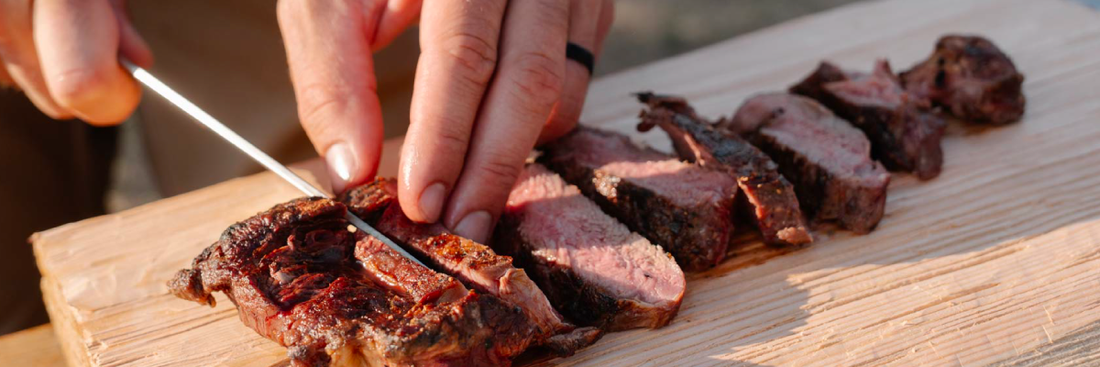5-Min Summary of Meat: the Original (and Ultimate) Superfood
Kate Kavanaugh
We’ve been told for decades that meat is just protein. But that story leaves out almost everything that matters. Meat isn’t just a building block for muscle—it’s one of the most nutrient-dense, bioavailable foods on the planet, and it’s deeply aligned with how our bodies evolved to eat.
To call meat “just protein” is like calling a symphony “just sound.” It’s a whole concert of nutrition, where amino acids, vitamins, and minerals work together in harmony to fuel your body and mind (Leroy et al., 2022). And when that meat is raised regeneratively, it doesn’t just feed you—it feeds the land, too. Healthy soils grow healthy plants. Healthy plants nourish healthy animals. And animals raised on diverse pastures pass those nutrients on to you (Khangura et al., 2023).
So what makes a food a superfood?
The term started over a hundred years ago with bananas, gained traction in the 2010s with kale and blueberries, and now shows up on powders, extracts, and supplements promising everything from better skin to sharper focus (Garner, 2015). But the truth is, most so-called superfoods are grown in isolation—in monocultures dependent on synthetic chemicals—and often come without proof.
At Force of Nature, we want to reclaim the word.
Our definition of a superfood is simple: it’s nutrient-dense, bioavailable, and familiar to our bodies. And we believe that meat—especially from animals raised on healthy, living soil—is the ultimate superfood.
Why? Because it’s not just what’s in your food—it’s what your body can actually use. That’s what bioavailable means: the nutrients are ready to be absorbed and put to work. Meat delivers the kind of iron your body recognizes, the kind of protein that doesn’t just build muscle, but builds systems—supporting hormones, brain chemistry, gut repair, fertility, and energy (Biesalski, 2005; Dietzen, 2018).
Many of these nutrients—like creatine, vitamin B12, and heme iron—are only found in animal foods. And meat is packed with other naturally occurring compounds that help your body function and recover, from muscle fatigue to immune support (Dietzen, 2018).

Compare that to spinach. It might look great on a nutrition label, but the iron it contains is hard to absorb. It’s the wrong kind—and it comes with compounds that make it even harder to use. Your body might only absorb 1–2% of that iron (Zhang et al., 1989). Meat, on the other hand, delivers iron your body absorbs up to 35% of (Hurrell & Egli, 2010).
But what makes regeneratively raised meat even more remarkable is where it starts: the soil. In healthy soil, billions of microbes help plants unlock vitamins and minerals. When animals graze those plants, they eat that nutritional complexity—and you do, too (Banerjee et al., 2023; Evans et al., 2024). That connection to the land is something you simply won’t find in most so-called superfoods.
Most trendy superfoods are grown in artificial conditions. Even mushrooms are often raised in sterile bags on sawdust. By contrast, regeneratively raised animals are part of an ecosystem—restoring water cycles, fertilizing soil, and growing nutrient-rich grasses. Peer-reviewed research shows this kind of grazing builds better soil, which means more nutrients in your food (van Vliet et al., 2023; Khangura et al., 2023).
This is food that works with nature, not against it. That complexity shows up on your plate—in the flavor, in the nutrition, and in how your body feels.
So let’s rethink the word superfood.
Meat isn’t super because it’s exotic or rare. It’s super because it’s familiar. Because your body knows it. Because it shaped who you are. Because it nourishes the land as it nourishes you.
That’s not a trend. That’s biology.
And in the essays to come, we’ll dig into just how deeply meat supports your body—one system at a time.
Meet the author – Kate Kavanaugh